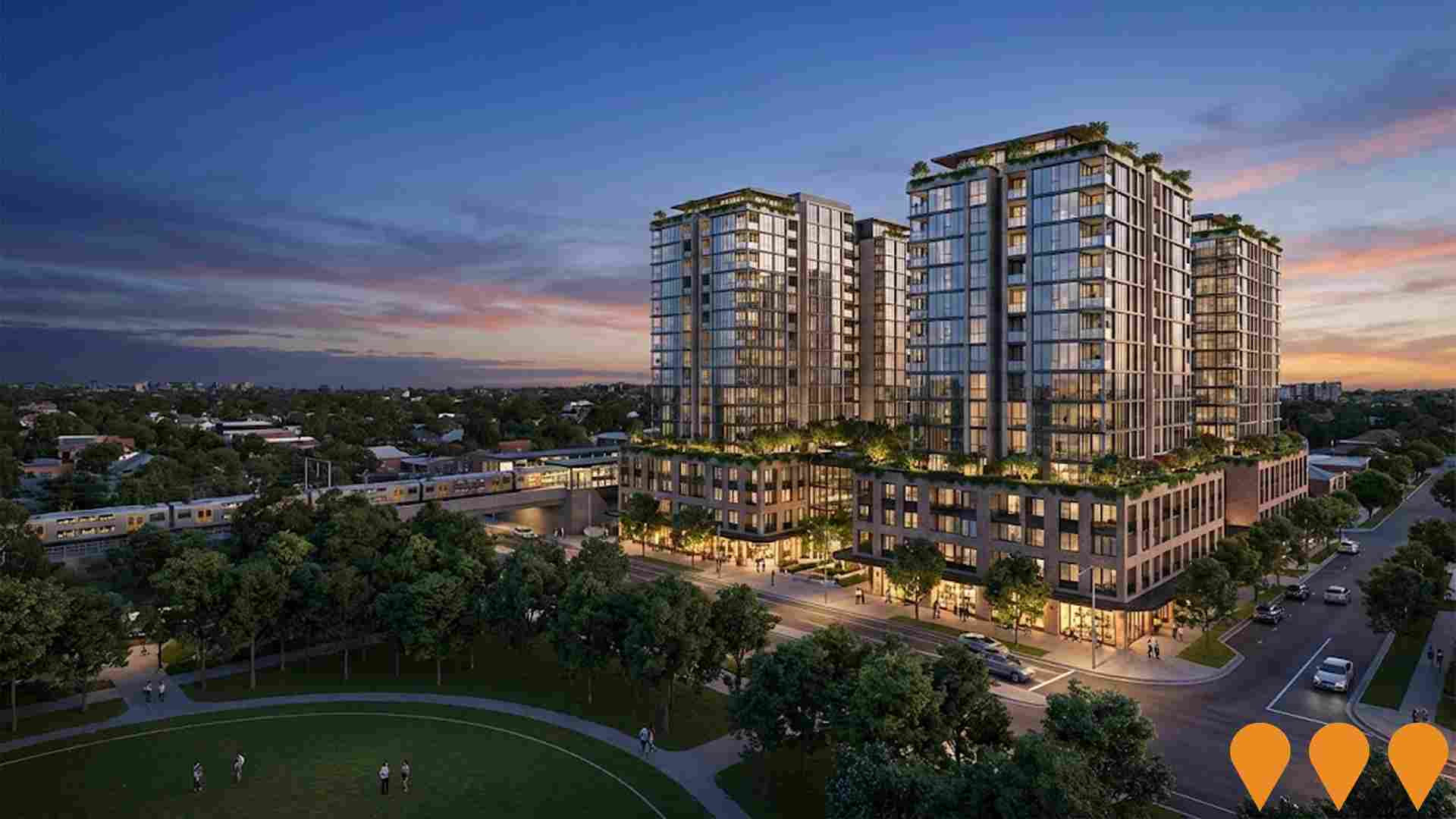Chart Color Schemes
est. as @ -- *
ABS ERP | -- people | --
2021 Census | -- people
Sales Activity
Curious about local property values? Filter the chart to assess the volume and appreciation (including resales) trends and regional comparisons, or scroll to the map below view this information at an individual property level.
Find a Recent Sale
Sales Detail
Population
Wahroonga (East) - Warrawee is positioned among the lower quartile of areas assessed nationally for population growth based on AreaSearch's assessment of recent, and medium term trends
Wahroonga (East) - Warrawee's population is around 18,251 as of Aug 2025. This reflects an increase of 60 people since the 2021 Census, which reported a population of 18,191 people. The change is inferred from the estimated resident population of 18,222 from the ABS as of June 2024 and an additional 30 validated new addresses since the Census date. This level of population equates to a density ratio of 1,369 persons per square kilometer. Population growth for the area was primarily driven by overseas migration.
AreaSearch is adopting ABS/Geoscience Australia projections for each SA2 area, as released in 2024 with 2022 as the base year. For areas not covered, AreaSearch utilises NSW State Government's SA2 level projections, released in 2022 with 2021 as the base year. Growth rates by age group are applied to all areas for years 2032 to 2041. Based on latest population numbers, a population increase just below the median of national statistical areas is expected, with the area projected to grow by 1,312 persons to 2041, recording a gain of 7.0% over the 17 years.
Frequently Asked Questions - Population
Development
AreaSearch analysis of residential development drivers sees Wahroonga (East) - Warrawee recording a relatively average level of approval activity when compared to local markets analysed countrywide
Wahroonga (East) - Warrawee has seen approximately 61 new homes approved annually over the past five financial years, totalling 307 homes. In FY26 so far, there have been 4 approvals recorded. The area has experienced population decline, yet development activity has been adequate relative to other areas. New homes are being built at an average expected construction cost of $965,000, indicating a focus on the premium segment with upmarket properties.
This financial year, $137.0 million in commercial development approvals have been recorded, suggesting robust local business investment. Compared to Greater Sydney, Wahroonga (East) - Warrawee shows 13.0% lower construction activity per person, while it ranks among the 71st percentile nationally. Recent construction comprises 52.0% detached houses and 48.0% medium and high-density housing, marking a significant shift from the current 75.0% houses, suggesting diminishing developable land availability and responding to evolving lifestyle preferences and housing affordability needs. With around 226 people per dwelling approval, Wahroonga (East) - Warrawee is considered a low density area. Future projections estimate an increase of 1,283 residents by 2041.
At current development rates, new housing supply should comfortably meet demand, providing good conditions for buyers and potentially supporting growth beyond current population projections.
Frequently Asked Questions - Development
Infrastructure
Wahroonga (East) - Warrawee has strong levels of nearby infrastructure activity, ranking in the top 30% nationally
Changes to local infrastructure significantly influence an area's performance. AreaSearch identified 37 projects likely impacting the area. Key projects include The Residences at Wahroonga Estate, Braeside Street Road Upgrade, Sydney Adventist Hospital Redevelopment, and Hammondcare Hospital And Seniors Housing Development. Below is a list detailing those most relevant.
Professional plan users can use the search below to filter and access additional projects.
INFRASTRUCTURE SEARCH
 Denotes AI-based impression for illustrative purposes only, not to be taken as definitive under any circumstances. Please follow links and conduct other investigations from the project's source for actual imagery. Developers and project owners wishing us to use original imagery please Contact Us and we will do so.
Denotes AI-based impression for illustrative purposes only, not to be taken as definitive under any circumstances. Please follow links and conduct other investigations from the project's source for actual imagery. Developers and project owners wishing us to use original imagery please Contact Us and we will do so.
Frequently Asked Questions - Infrastructure
Hornsby Town Centre Master Plan
Comprehensive urban renewal master plan for Hornsby Town Centre delivering up to 6,000 new dwellings in buildings up to 36 storeys, approximately 2,900 new jobs, upgraded public domain, new community facilities, improved transport connections and sustainable infrastructure. The master plan was finalised and came into legal effect in November 2024 with development applications now able to be lodged under the new planning controls.
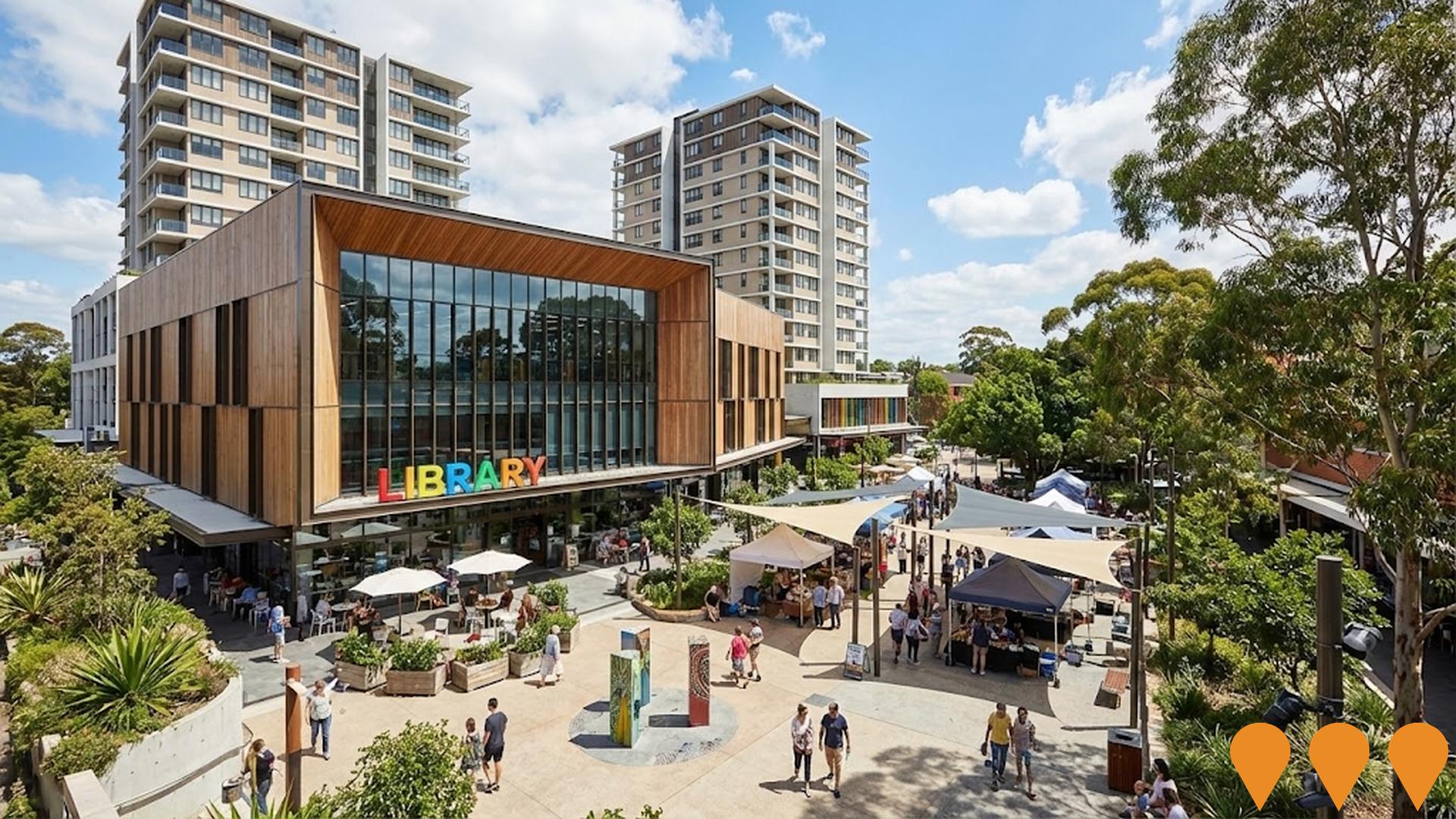
Sydney Adventist Hospital Redevelopment
Major hospital redevelopment delivering new 12-storey Clinical Services Building (Clark Tower), 5-storey car park, and expanded facilities. Largest redevelopment in the hospital's history, enhancing health services for Upper North Shore community.
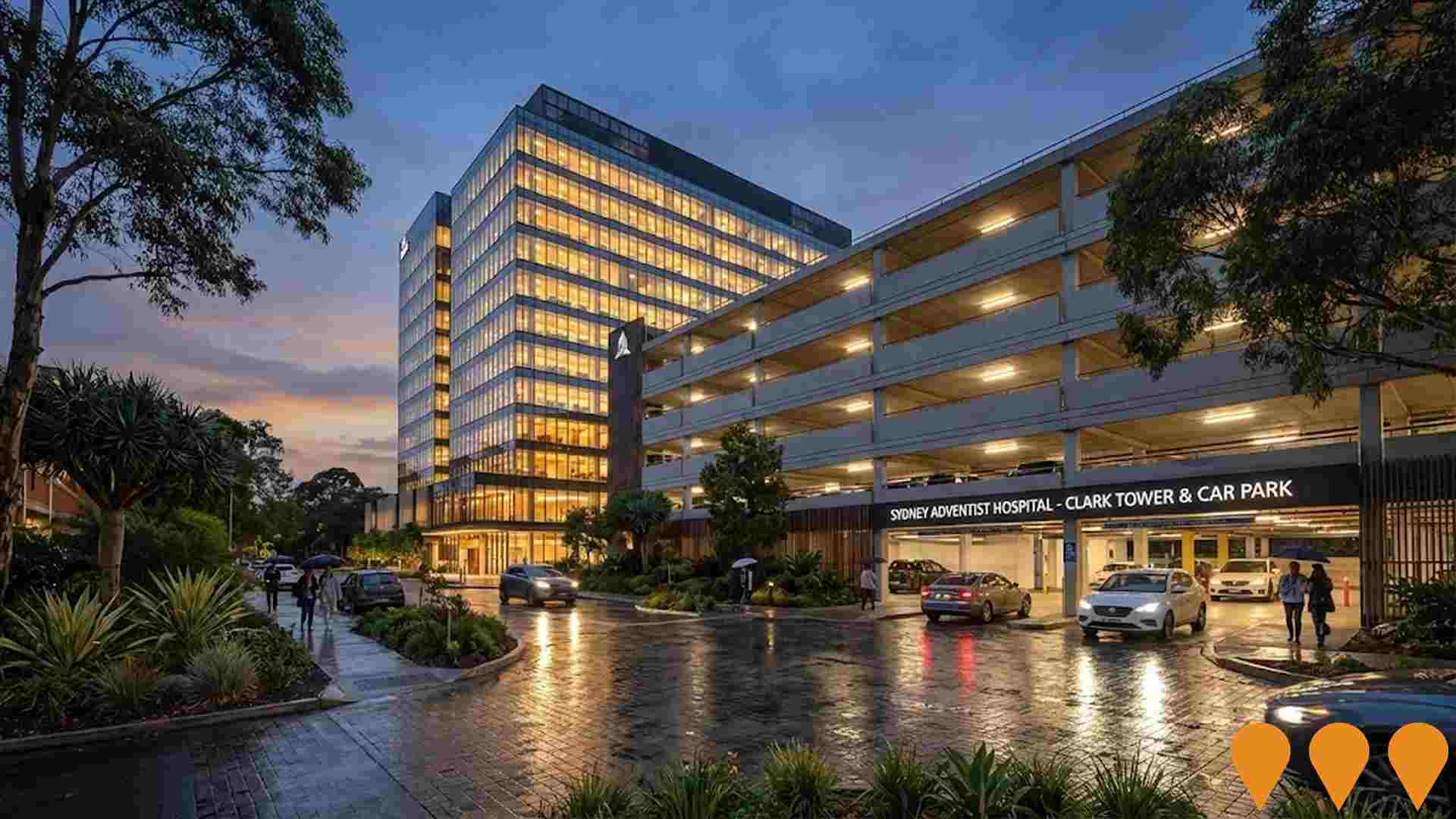
Turramurra Community Hub
Ku-ring-gai Council's proposed Turramurra Community Hub aims to deliver a new multi-purpose community building, upgraded library, public park, town square and mixed-use precinct. Due to funding constraints and a May 2024 review of feasibility for the three northern hubs (Lindfield, Gordon, Turramurra), the project is now likely to proceed in stages. Council is in active discussions with Coles for the potential sale/lease of part of the Ray Street civic site to enable an initial stage comprising a new supermarket, specialty retail and residential apartments above, with community facilities to follow in later stages.
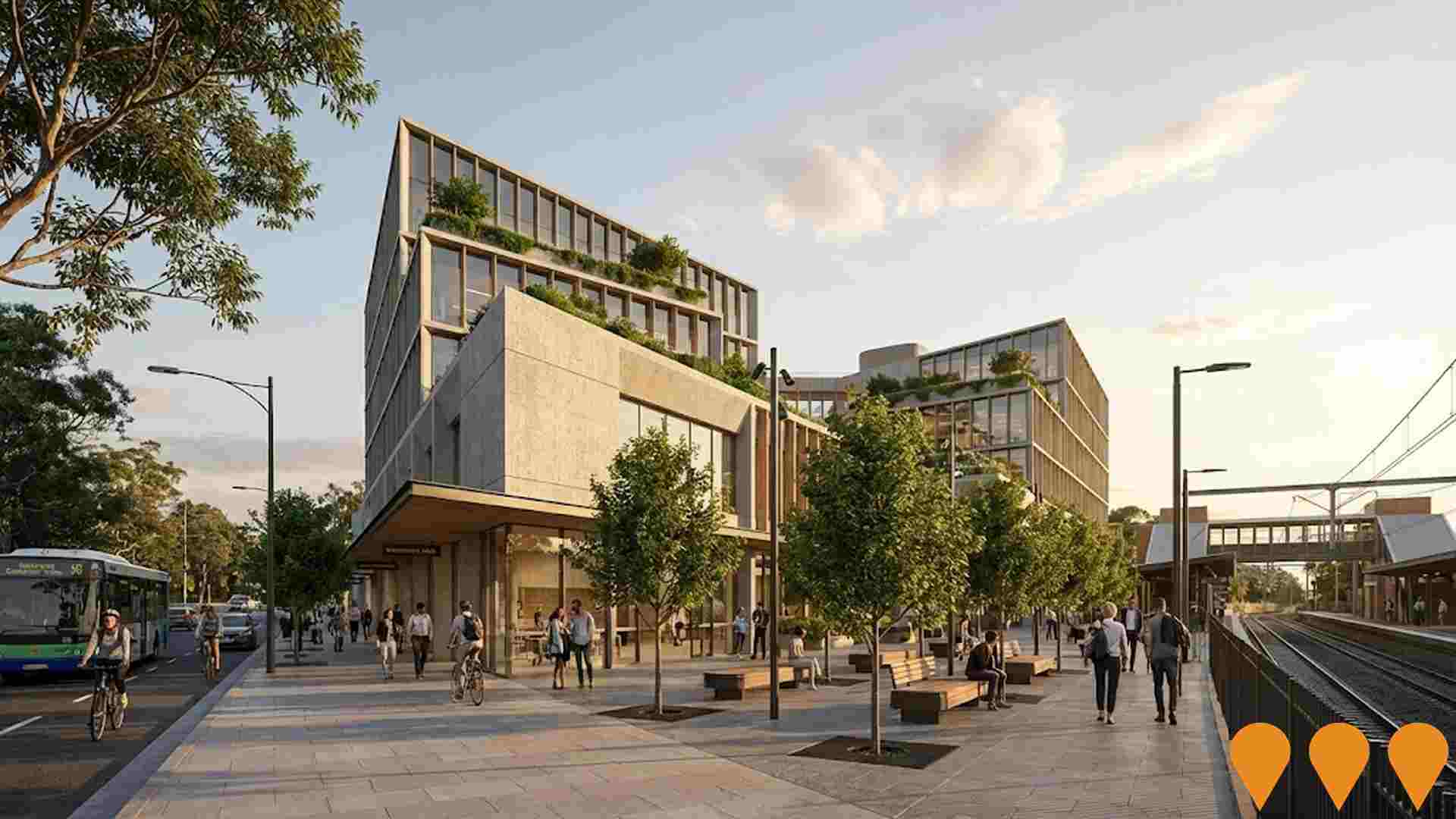
Hornsby Park
Transformation of the 60-hectare former Hornsby Quarry into a major parkland. Stage 1, opening mid-2026, features the 'Crusher Plant' precinct with a lookout, lawn, and amenities, plus the 'Quarry Loop' shared path. Future stages include the Old Mans Valley 'Field of Play' (commencing 2026), a recreational lake, and wetlands. A proposed canopy skywalk is currently under review.
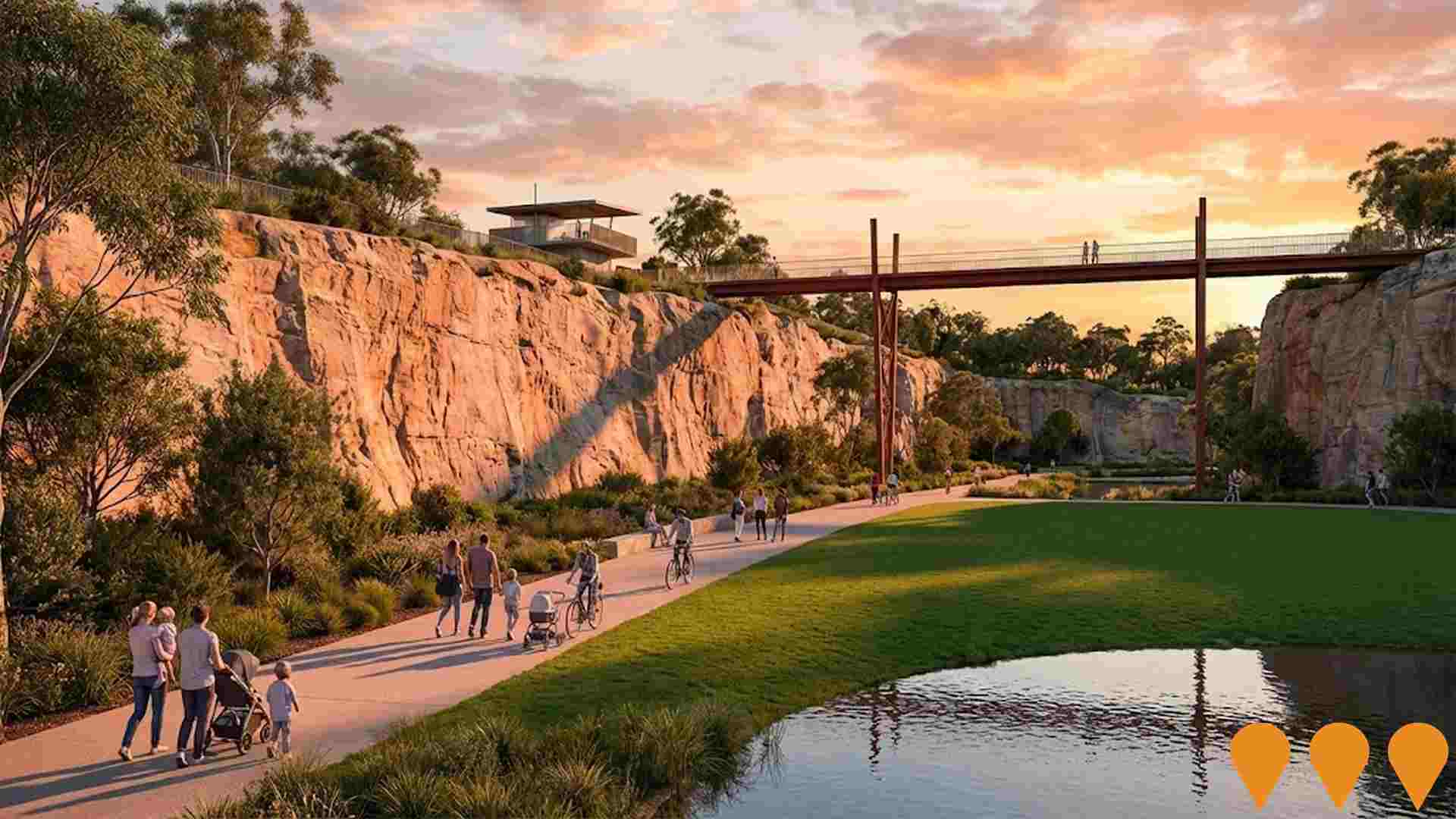
Twin Towers Hornsby
Mixed-use residential and retail development featuring approximately 249 high-quality apartments in twin towers of 20 storeys and 12 storeys, including supermarket and retail shops, with heritage building relocation and four minutes walk from Hornsby railway station.

The Residences at Wahroonga Estate
Luxurious residential development featuring 166 apartments across 3-4 buildings on the 64.2ha Wahroonga Estate site. Developed by Capital Corporation for the Seventh-day Adventist Church, featuring curved brick facade design and landscaped communal spaces adjacent to Coupes Creek. The first stage of the re-imagined master planned community of Wahroonga Estate, designed by international award-winning architects Group GSA with bespoke interiors by Coco Republic.
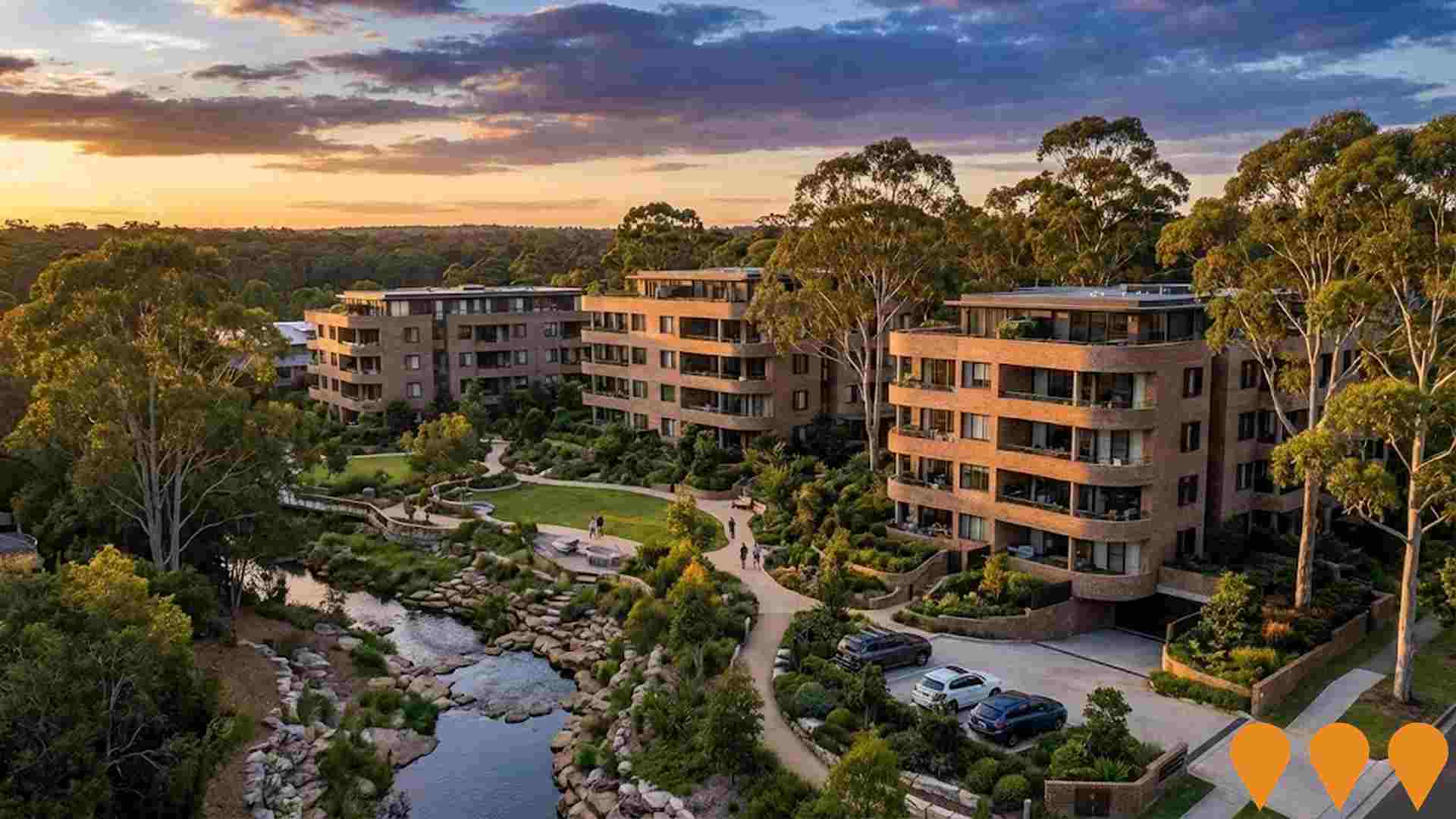
Turramurra Plaza Redevelopment
Redevelopment of existing shopping center with expanded retail space, improved parking facilities, and enhanced community amenities. Modern design with sustainable features.
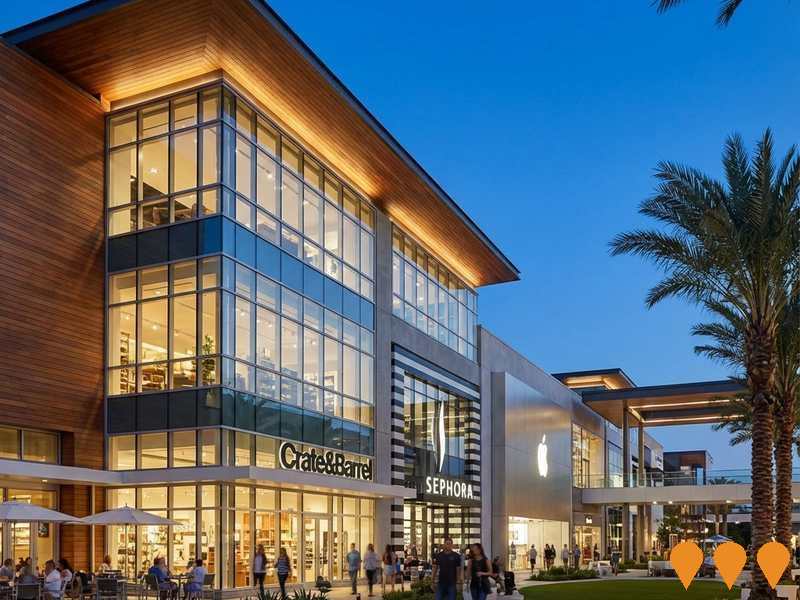
Cascade Gardens Pymble
Architecturally striking low-rise boutique buildings featuring 1, 2 & 3 bedroom apartments. Designed by DKO with sophisticated interiors, granite island benchtops, Miele appliances, and oversized balconies. Built around landscaped common areas with BBQ facilities and village green.

Employment
Wahroonga (East) - Warrawee has seen below average employment performance when compared to national benchmarks
Wahroonga (East) - Warrawee has a highly educated workforce with the technology sector prominent. Its unemployment rate is 4.1%, as of June 2025.
There are 9,389 residents in work, with an unemployment rate of 0.1% below Greater Sydney's rate of 4.2%. Workforce participation is similar to Greater Sydney's 60.0%. Leading employment industries among residents include professional & technical, health care & social assistance, and finance & insurance. The area specializes in professional & technical jobs, with an employment share of 1.6 times the regional level.
Construction has limited presence at 5.0% compared to 8.6% regionally. Labour force levels decreased by 0.3%, and employment decreased by 2.2% over the 12 months to June 2025, causing the unemployment rate to rise by 1.9 percentage points. Jobs and Skills Australia's national employment forecasts from May 2025 project national employment growth of 6.6% over five years and 13.7% over ten years. Applying these projections to Wahroonga (East) - Warrawee's employment mix suggests local growth of approximately 7.7%% over five years and 15.4% over ten years.
Frequently Asked Questions - Employment
Income
The economic profile demonstrates exceptional strength, placing the area among the top 10% nationally based on comprehensive AreaSearch income analysis
According to AreaSearch's aggregation of ATO data released for the financial year ended June 2022, Wahroonga (East) - Warrawee had a median income among taxpayers of $63,857 and an average level of $114,778. This ranks in the top percentile nationally, compared to Greater Sydney's levels of $56,994 and $80,856 respectively. As of September 2025, estimated median income is approximately $71,909 and average income is $129,252, based on Wage Price Index growth since financial year 2022. Census data from 2021 shows household, family, and personal incomes in Wahroonga (East) - Warrawee rank between the 86th and 99th percentiles nationally. The $4000+ income bracket dominates with 41.7% of residents, unlike metropolitan Sydney where the $1,500-$2,999 category predominates at 30.9%. The district's affluence is evident with 53.2% earning over $3,000 per week, supporting premium retail and services. Housing accounts for 13.9% of income, and residents rank in the 98th percentile for disposable income. The area's SEIFA income ranking places it in the 10th decile.
Frequently Asked Questions - Income
Housing
Wahroonga (East) - Warrawee is characterized by a predominantly suburban housing profile, with above-average rates of outright home ownership
The dwelling structure in Wahroonga (East) - Warrawee, as per the latest Census, consisted of 75.1% houses and 25.0% other dwellings such as semi-detached homes, apartments, and 'other' dwellings. This is compared to Sydney metro's 68.8% houses and 31.3% other dwellings. The home ownership level in Wahroonga (East) - Warrawee was 42.5%, with mortgaged dwellings at 41.1% and rented dwellings at 16.4%. The median monthly mortgage repayment in the area was $3,600, higher than Sydney metro's average of $3,500. The median weekly rent figure was recorded at $650, compared to Sydney metro's $630. Nationally, Wahroonga (East) - Warrawee's mortgage repayments were significantly higher than the Australian average of $1,863, while rents were substantially above the national figure of $375.
Frequently Asked Questions - Housing
Household Composition
Wahroonga (East) - Warrawee features high concentrations of family households, with a fairly typical median household size
Family households account for 83.9% of all households, consisting of 48.1% couples with children, 26.4% couples without children, and 8.7% single parent families. Non-family households make up the remaining 16.1%, with lone person households at 15.0% and group households comprising 1.0% of the total. The median household size is 2.9 people, which matches the Greater Sydney average.
Frequently Asked Questions - Households
Local Schools & Education
Wahroonga (East) - Warrawee demonstrates exceptional educational outcomes, ranking among the top 5% of areas nationally based on AreaSearch's comprehensive analysis of qualification and performance metrics
Educational attainment in Wahroonga (East) - Warrawee exceeds national and state averages. 55.9% of residents aged 15+ have university qualifications, compared to 30.4% nationally and 32.2% in NSW. Bachelor degrees are the most common at 34.4%, followed by postgraduate qualifications (17.7%) and graduate diplomas (3.8%). Vocational pathways account for 18.5%, with advanced diplomas at 10.2% and certificates at 8.3%.
Educational participation is high, with 33.5% of residents currently enrolled in formal education: 10.7% in secondary, 10.2% in primary, and 8.2% in tertiary education. The area has 13 schools serving 7,339 students, with an ICSEA score of 1154, indicating high advantage. There are 8 primary, 1 secondary, and 4 K-12 schools. Wahroonga (East) - Warrawee functions as an education hub with 40.2 school places per 100 residents, significantly above the regional average of 20.6. Note: for schools showing 'n/a' in enrolments, refer to parent campus.
Frequently Asked Questions - Education
Schools Detail
Nearby Services & Amenities
Transport
Transport servicing is good compared to other areas nationally based on assessment of service frequency, route connectivity and accessibility
Transport analysis indicates 124 active transport stops within Wahroonga (East) - Warrawee area. These comprise a mix of train and bus services. There are 56 individual routes servicing these stops, collectively facilitating 4033 weekly passenger trips.
Transport accessibility is rated excellent, with residents typically located 184 meters from the nearest stop. Service frequency averages 576 trips per day across all routes, equating to approximately 32 weekly trips per individual stop.
Frequently Asked Questions - Transport
Transport Stops Detail
Health
Wahroonga (East) - Warrawee's residents boast exceedingly positive health performance metrics with very low prevalence of common health conditions across all age groups
Health outcomes data shows excellent results in Wahroonga (East) - Warrawee, with very low prevalence of common health conditions across all age groups. The rate of private health cover is exceptionally high at approximately 78% of the total population (14,144 people), compared to 79.6% across Greater Sydney and a national average of 55.3%. The most prevalent medical conditions are arthritis and asthma, affecting 6.4 and 6.3% of residents respectively, while 74.1% report being completely clear of medical ailments, compared to 76.0% in Greater Sydney.
The area has 20.9% of residents aged 65 and over (3,812 people), with seniors' health outcomes broadly aligning with the general population's profile.
Frequently Asked Questions - Health
Cultural Diversity
Wahroonga (East) - Warrawee is among the most culturally diverse areas in the country based on AreaSearch assessment of a range of language and cultural background related metrics
Wahroonga East-Warrawee has notable cultural diversity, with 28.0% of its population speaking a language other than English at home and 39.0% born overseas. Christianity is the predominant religion in Wahroonga East-Warrawee, comprising 52.7%. However, Judaism is overrepresented compared to Greater Sydney, making up 0.6% versus 2.5%.
The top three ancestry groups are English (24.6%), Australian (18.8%), and Chinese (12.3%), the latter being lower than the regional average of 17.8%. Some ethnic groups show significant variations: South African is overrepresented at 1.7% versus 1.6%, Korean at 1.7% compared to 2.3%, and Sri Lankan at 0.6% against 0.4%.
Frequently Asked Questions - Diversity
Age
Wahroonga (East) - Warrawee hosts an older demographic, ranking in the top quartile nationwide
The median age in Wahroonga (East) - Warrawee is 43 years, which is higher than Greater Sydney's average of 37 years and exceeds the national average of 38 years. The age profile shows that individuals aged 45-54 are particularly prominent, making up 15.8% of the population, while those aged 25-34 constitute only 5.3%. Between 2021 and present, the proportion of individuals aged 15-24 has increased from 14.2% to 16.2%, and the 75-84 age group has grown from 6.9% to 8.0%. Conversely, the proportion of those aged 25-34 has decreased from 6.4% to 5.3%. By 2041, demographic projections indicate significant shifts in Wahroonga (East) - Warrawee's age structure. The number of individuals aged 85 and above is projected to grow exceptionally, increasing by 809 people to a total of 1,476, representing a 122% increase from the previous figure of 666. Notably, the combined age groups of 65 and above will account for 91% of total population growth, reflecting the area's aging demographic profile. In contrast, the populations aged 25-34 and 0-4 are expected to decline.

